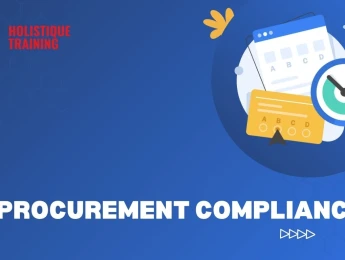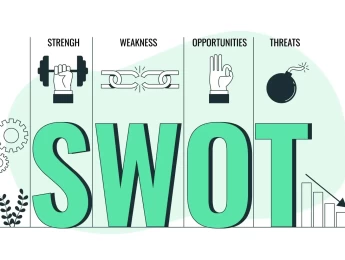In every department, it’s important to always aim for continuous improvement. No process or organisation is perfect, and there’s always work you can do to make your department more productive and efficient and improve the quality. It’s also essential to search out risk areas and single points of failure and place them in a contingency plan to secure your business, even in times of hardship.
Six Sigma can help you maximise your profit by ensuring that your processes are as slick as possible and that your employees understand the priorities, which will help your business work and thrive in the future.
Six Sigma will provide the tools, provide the language, and assist in formulating concepts that will improve your business processes, streamline your technology, and increase employee morale, making your operation the most successful it can be.
This course is designed to help you define your issues, measure your changes, and effectively analyse them to make controlled improvements that will maximise your profits.
Upon completion of this course, participants will be able to:
- Understand Six Sigma methodology.
- Make your workforce more productive.
- Improve employee morale while increasing productivity.
- Develop more efficient systems automation and technological advancements.
- Assess risk areas and put in contingency plans.
- Develop Six Sigma language, critical thinking, and concepts.
- Understand a priority matrix and how to make the most out of your processes.
- Understand Six Sigma customer service and journey mapping.
- Develop your project management skills.
- Understand DMAIC application and problem-solving techniques.
This course is for anyone responsible for managing projects or maximising profits by streamlining processes and assessing priority gains. It would be most beneficial for:
- Project Managers
- IT Professionals
- Operations Managers
- Business Owners
- Directors
- Planning Managers
- Change and Control Managers
- Customer Service Specialists
- Account Managers
- Risk Assessors
- Data Analysts
This course uses various adult learning methods to aid full understanding and comprehension. Participants will participate in interactive presentations and group discussions to understand the language, patterns, and key concepts in Six Sigma planning and project roll-out.
They will consider their own organisation, conduct a journey map to understand the problem areas, develop Six Sigma processes to understand the issue, develop a feasible solution, and monitor the change.
Day 5 of each course is reserved for a Q&A session, which may occur off-site. For 10-day courses, this also applies to day 10
Section 1: Quality Management & The Importance of Change
- Why quality monitoring is essential for your business.
- The advantages of monitoring quality.
- Quality monitoring and your employees.
- Creating balanced scorecards based on productivity and quality.
- ISO 9000.
- The cost of letting quality slip.
- Managing against quality targets and performance management tools for improvement.
- Getting your employees on board.
Section 2: What Six Sigma Means to Your Business
- Six Sigma methodology and what it means for you.
- Six Sigma history and why it is useful across all businesses.
- How Six Sigma can help you boost your profits.
- Saving on outgoings using Six Sigma concepts.
- Strategic development using Six Sigma.
Section 3: Six Sigma Planning & Implementation
- How Six Sigma planning can help you with customer service excellence.
- Six Sigma performance levels and achievements.
- Rewarding the Six Sigma successes.
- The Kano Model.
- DMAIC models.
- Becoming a Six Sigma black belt.
- The roles of managers and employees.
Section 4: Six Sigma Problem-Solving & Risk Assessments
- Tools and automation.
- Control and Pareto charts.
- The importance of Scatter and Turtle diagrams.
- Statistics used for Six Sigma planning.
- Software analysis.
- Using data for planning and change implementation.
Section 5: Prioritisation Matrix
- The 80/20 method
- How to select the most important projects.
- 10 questions for leadership professionals.
- Guidelines and audit logging.
- Projects to avoid and why.
- What makes your project a success?
- How to frame success to investors and partners.
Section 6: Monitoring & Measuring Your Successes
- Review your data and feedback.
- Find quantitative and qualitative data sets.
- Understanding the impact of your changes.
- Aim for continuous improvement and develop your planning for the next step.
- Software amendments and developments to suit your business.
- Cause and effect diagrams for future contingency planning.
Upon successful completion of this training course, delegates will be awarded a Holistique Training Certificate of Completion. For those who attend and complete the online training course, a Holistique Training e-Certificate will be provided.
Holistique Training Certificates are accredited by the British Assessment Council (BAC) and The CPD Certification Service (CPD), and are certified under ISO 9001, ISO 21001, and ISO 29993 standards.
CPD credits for this course are granted by our Certificates and will be reflected on the Holistique Training Certificate of Completion. In accordance with the standards of The CPD Certification Service, one CPD credit is awarded per hour of course attendance. A maximum of 50 CPD credits can be claimed for any single course we currently offer.
- Course Code MG2-137
- Course Format Classroom,
- Duration 10 days











